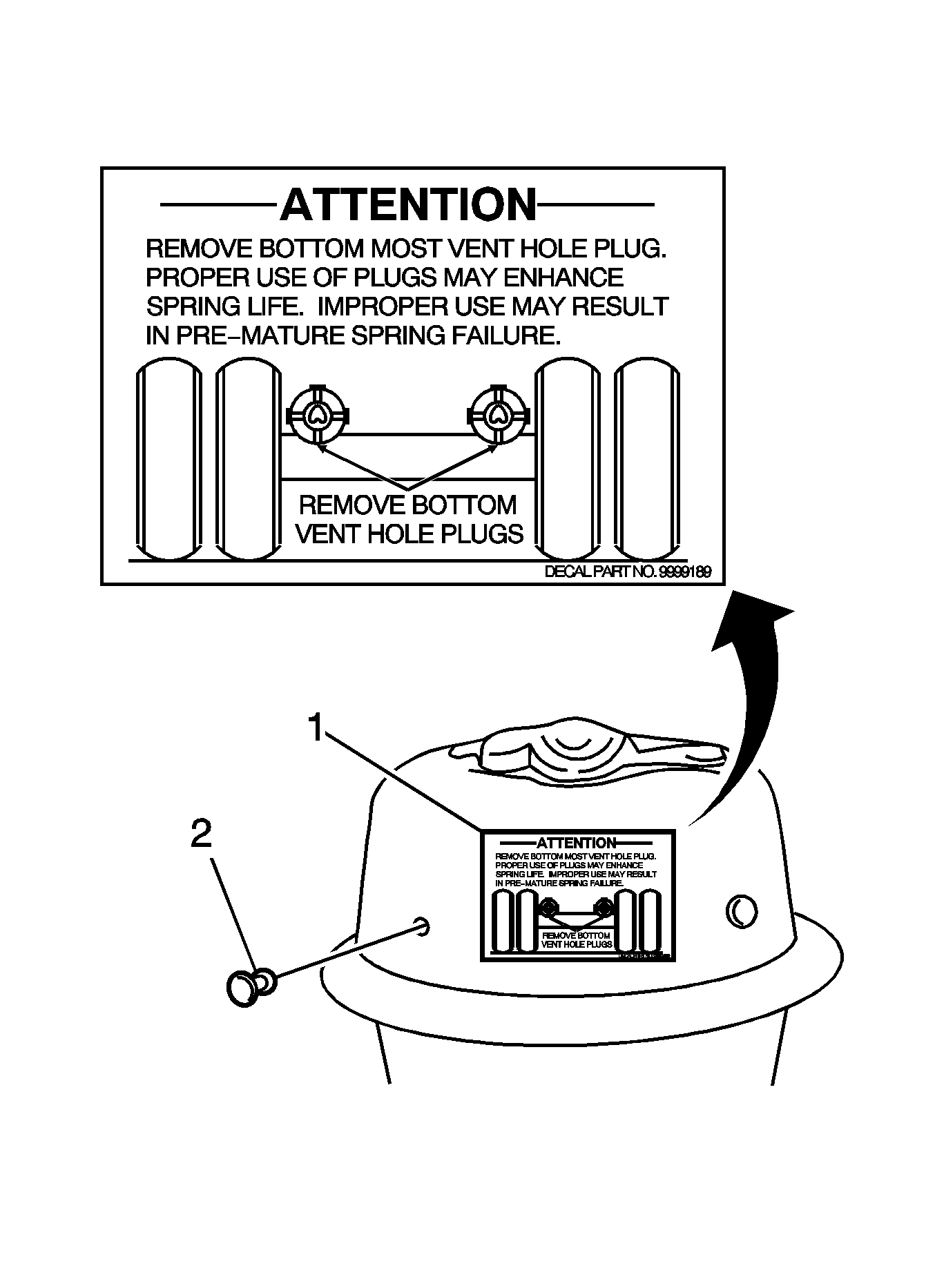
| Subject: | Information on Air Brake Park Brake Chamber Vent Holes to Avoid Water Intrusion |
| Models: | 1999-2002 Chevrolet C-Series (H-Model) Conventional Medium Duty Models |
| 1999-2002 Chevrolet T-Series (F-Model) Medium Duty Tilt Cab Models |
| 1999-2002 Chevrolet B7 School Bus Chassis Models |
| 2003-2005 Chevrolet Kodiak C6500-C8500 Series Models |
| 2004-2005 Chevrolet T-Series (F-Model) Medium Duty Tilt Cab Models |
| 1999-2002 GMC C-Series (H-Model) Conventional Medium Duty Models |
| 1999-2002 GMC T-Series (F-Model) Medium Duty Tilt Cab Models |
| 1999-2002 GMC B7 School Bus Chassis Models |
| 2003-2005 GMC Topkick C6500-C8500 Series Models |
| 2004-2005 GMC T-Series (F-Model) Medium Duty Tilt Cab Models |
| 2004-2005 Isuzu F-Series Commercial Models |
| All with Air Brakes (RPO JE4) |
The above-listed models are equipped with air brake chambers that are manufactured with vent holes drilled at 90 degree angles around the park brake spring canister. These holes are drilled around the canister to accommodate the various mounting
possibilities. These canisters are mounted in a horizontal position on all models. At least one vent hole will be located at the bottom of the canister. On the 2003 and newer models, these canisters are indexed differently and are installed at a slightly different
angle. On these models, there will be two lower vent holes at the bottom of the canister. The purpose of these holes is to allow the spring chamber to breathe and drain out any water (due to splash or condensation) that enters the assembly. Water trapped in
the canister may cause the park brake spring to corrode and eventually break.
New canisters are shipped from the manufacturer with all of the vent holes plugged in order to prevent foreign material from entering the assembly during shipping and storage. Trucks built between 1999 and 2003 may have been built with all of the vent
plugs installed.
Whenever the air brake canisters are installed, the lower plug(s) must be removed in order to allow drainage. As part of any brake service or routine maintenance on the above-listed vehicles, the technician should inspect the air brake canisters and verify
that the lower vent hole(s) is not plugged.

A decal (1) will be affixed to the chamber describing the vent hole plug (2) removal procedure as shown in the above illustration.


